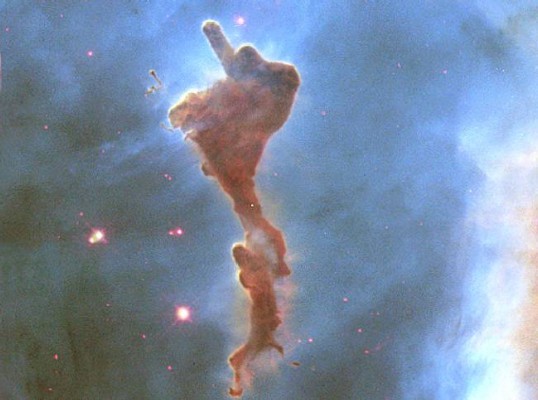Thanks U-238.
Thanks .
|
Posted on 03/28/2012 8:26:40 PM PDT by U-238
Pulsars, superdense neutron stars, are perhaps the most extraordinary physics laboratories in the universe. Research on these extreme and exotic objects already has produced two Nobel Prizes. Pulsar researchers now are poised to learn otherwise-unavailable details of nuclear physics to test general relativity in conditions of extremely strong gravity, and to directly detect gravitational waves with a “telescope” nearly the size of our galaxy.
Neutron stars are the remnants of massive stars that exploded as supernovae. They pack more than the mass of the Sun into a sphere no larger than a medium-sized city, making them the densest objects in the universe, except for black holes, for which the concept of density is theoretically irrelevant. Pulsars are neutron stars that emit beams of radio waves outward from the poles of their magnetic fields. When their rotation spins a beam across Earth, radio telescopes detect that as a “pulse” of radio waves.
By precisely measuring the timing of such pulses, astronomers can use pulsars for unique “experiments” at the frontiers of modern physics.
Pulsars are at the forefront of research on gravity. Albert Einstein published his general theory of relativity in 1916, and his description of the nature of gravity has, so far, withstood numerous experimental tests. However, there are competing theories.
“Many of these alternate theories do just as good a job as general relativity of predicting behavior within our solar system. One area where they differ, though, is in the extremely dense environment of a neutron star,” said Ingrid Stairs from the University of British Columbia in Canada
(Excerpt) Read more at astronomy.com ...
Thanks for the post
No Problem
:)
We dedicate this book
To our fellow citizens
Who, for love of truth,
Take from their own wants
By taxes and gifts,
And now and then send forth
One of themselves
As dedicated servant,
To forward the search
Into the mysteries and marvelous simplicities
Of this strange and beautiful universe,
Our home.
—dedication of “Gravitation”, Misner, Thorne & Wheeler
 |
||
| · join · view topics · view or post blog · bookmark · post new topic · subscribe · | ||
| Google news searches: exoplanet · exosolar · extrasolar · | ||

A nod to Apollo 11, do you think? ( Copyright 1970 )
Praise The LORD, He certainly meant for us to be able to study His creation. He gives us what we need.
bflr
I had forgotten that so little time elapsed from discovery of neutron star/pulsar and the Nobel Prize for it in 1974. Seven years is pretty darned fast.
Thanks for posting. I’ve always been intrigued with neutron stars, I think the most fascinating objects in the universe
Disclaimer: Opinions posted on Free Republic are those of the individual posters and do not necessarily represent the opinion of Free Republic or its management. All materials posted herein are protected by copyright law and the exemption for fair use of copyrighted works.